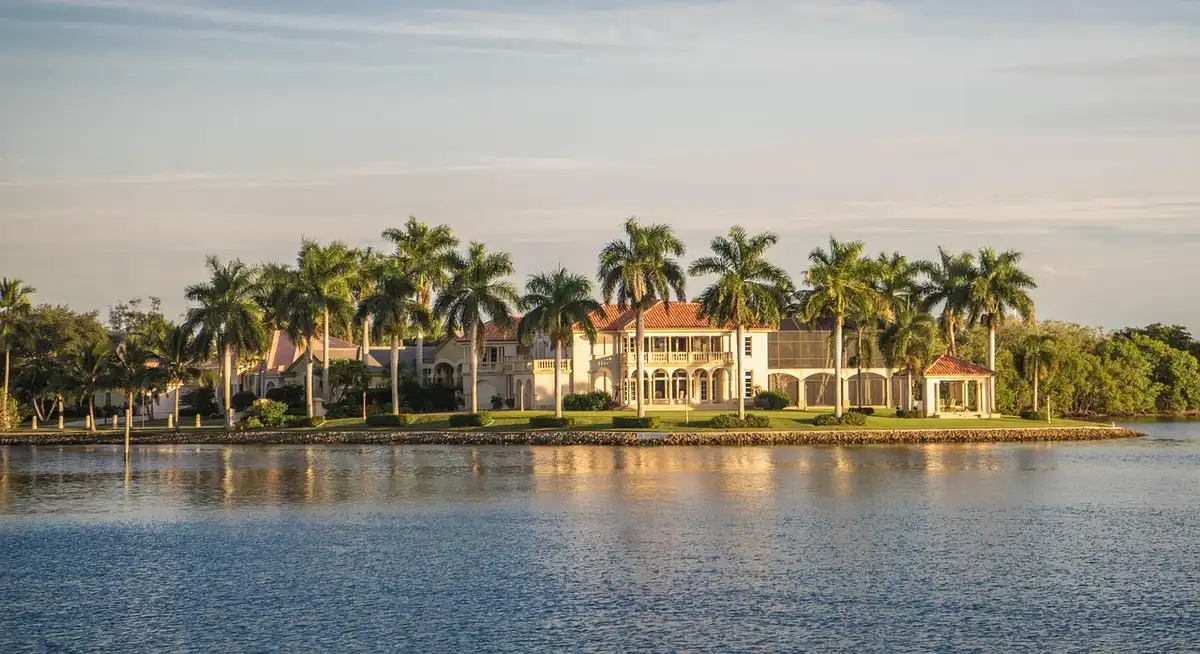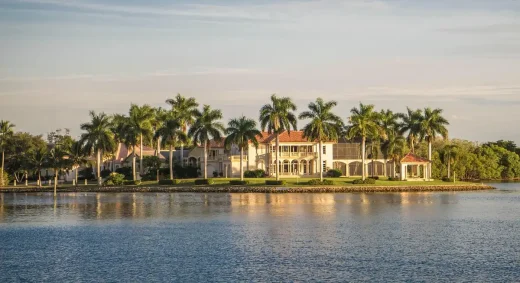Florida housing market may be shifting in 2025, FL waterfront real estate, US property
Florida Housing Market May Be Shifting in 2025
February 4 2025
Florida’s housing market is at a crossroads. While its population continues to surge—primarily driven by international migration—a notable decline in domestic net migration suggests the Sunshine State’s appeal may be waning among Americans.
Rising insurance costs, frequent natural disasters, and increasing property prices are compounding challenges for residents and investors. This article explores the intricate dynamics reshaping Florida’s housing market, analyzing regional trends, economic implications, and expert insights from key stakeholders such as Seanote Florida.
Shifting Patterns in Florida’s Population Growth
Florida has long been synonymous with population growth, averaging annual increases of over 350,000 people in recent years. According to the U.S. Census Bureau, the state saw a net population rise of 467,347 from 2023 to 2024. However, this growth hides a critical shift: domestic migration has fallen sharply, plummeting from 317,923 people in 2022 to just 63,346 by late 2024. Meanwhile, international migration contributed 411,322 new residents, highlighting its growing role in Florida’s demographic trends.
This shift raises questions about the state’s housing market sustainability. Historically, domestic migrants from states like New York and California drove demand for residential real estate. However, factors such as affordability challenges, increasing home insurance premiums, and hurricane-related risks may now be discouraging Americans from relocating to Florida.
Uneven Market Performance Across Florida’s Regions
The impact of these demographic changes is unevenly distributed across Florida’s metro areas. For instance, Jacksonville’s housing market has exhibited signs of cooling. According to the Comprehensive Housing Market Analysis (CHMA) report for Jacksonville, home sales declined by 22% in 2023, reaching their lowest levels since 2017. Despite this slowdown, housing inventory remains tight, with only a 2.8-month supply available as of December 2023.
In contrast, areas like Miami and Tampa continue to see robust demand, driven by international buyers and affluent snowbirds seeking vacation properties. However, even these markets are not immune to challenges. Rising costs associated with Homeowners Association (HOA) fees and special assessments for condominium owners under new state regulations have disproportionately affected the condo market.
The disparity between urban and suburban markets is also noteworthy. Suburban areas, especially master-planned communities like Nocatee in St. Johns County, are thriving due to relatively affordable housing and an influx of families seeking spacious living environments.
Economic Stressors: Insurance Costs and Natural Disasters
Florida’s vulnerability to hurricanes and flooding has placed additional strain on the housing market. The devastating hurricanes Milton and Helene in 2023 caused billions in damages, contributing to rising insurance premiums. Between the second and third quarters of 2024 alone, the average statewide premium for all-perils single-family home policies increased by 3.1%, according to the Florida Office of Insurance Regulation.
This upward trend reflects inflationary pressures, increased reinsurance costs, and heightened demand for labor and materials in disaster-affected regions. Paul Handerhan, president of the Federal Association for Insurance Reform, points out that nearly two-thirds of recent premium increases can be attributed to inflation. These escalating costs have priced out many middle-income families, exacerbating affordability issues.
While condo owners experienced some relief with lower-than-average premium increases in 2024, challenges persist for single-family homeowners. Experts warn that without reforms to Florida’s Hurricane Catastrophe Fund, premiums will likely remain volatile.
Affordability: The Central Challenge
Affordability remains the Achilles’ heel of Florida’s housing market. The National Association of Home Builders’ Housing Opportunity Index (HOI) highlights a significant decline in affordability over the past four years. The HOI for Jacksonville, for instance, dropped from 71.4 in 2019 to just 39.0 in 2023. This means that fewer than 40% of homes sold in the region are affordable to a median-income family.
The situation is equally grim for renters. While Jacksonville’s rental market added approximately 10,500 units in 2023, vacancy rates rose to 13.5%, the highest in over two decades. Despite this surplus, the average monthly rent of $1,471 remains out of reach for many low- and middle-income families.
Michael R. Jenkins, a seasoned real estate expert, emphasizes that rising home prices and stagnant wages are creating a “perfect storm” for affordability challenges. “Developers must prioritize mixed-income housing and work with state regulators to address these disparities,” he suggests, noting that affordable solutions are critical to sustaining Florida’s housing market.
Insights from Industry Leaders
According to experts at Seanote Florida, regional variations in Florida’s housing market highlight the importance of tailoring development strategies to local needs. A Seanote spokesperson notes, “While coastal areas attract high-net-worth buyers, inland regions require more affordable housing options to meet demand from working-class families.” This dual approach, they argue, is essential for achieving market balance.
Seanote also stresses the importance of resilient construction practices to mitigate the effects of hurricanes and other natural disasters. By investing in durable materials and innovative design, Florida’s housing market can better withstand future challenges while maintaining investor confidence.
Policy and Development Trends
Florida’s housing policies are playing a pivotal role in shaping market conditions. Legislative reforms in 2022 aimed at curbing litigation and stabilizing insurance costs have had mixed results. While some progress has been made, experts argue that additional measures are needed to incentivize affordable housing development and expand the state’s Hurricane Catastrophe Fund.
Meanwhile, master-planned communities such as SilverLeaf and Nocatee are setting new benchmarks for suburban development. Located in St. Johns County, these projects offer a mix of single-family homes, townhouses, and amenities like parks and retail spaces. With prices starting in the $400,000s, they cater to middle-income families while addressing Florida’s growing demand for affordable yet quality housing.
Federal Immigration Policies and Their Impact
Florida’s reliance on international migration underscores the potential impact of federal immigration policies. With Donald Trump’s election in November 2024, his proposed restrictions on migration could reduce the inflow of international residents. Experts warn that such policies might slow population growth, dampening housing demand in cities like Miami and Orlando.
On the flip side, Florida’s Republican-dominated legislature is unlikely to adopt sanctuary city policies, which may further deter international migrants from settling in the state. This dynamic creates uncertainty for the housing market, particularly in regions that depend heavily on foreign buyers.
Regional Case Study: Jacksonville
Jacksonville’s CHMA report provides valuable insights into the challenges and opportunities facing Florida’s housing market. With a population of 1.73 million as of 2024, Jacksonville has experienced strong job growth in sectors like professional services and healthcare. However, this economic expansion has not translated into robust housing demand.
The table below illustrates Jacksonville’s housing trends:
| Metric (Source) | 2022 | 2023 | Change |
| Home Sales | 50,850 | 39,650 | −22% |
| Average Home Price | $384,600 | $403,000 | +5% |
| Apartment Vacancy Rate | 9.8% | 13.5% | +3.7% |
These figures highlight the delicate balance between supply and demand in Jacksonville’s real estate market.
What Lies Ahead for Florida’s Housing Market?
Florida’s housing market is at a turning point. While population growth remains strong, the decline in domestic migration signals potential vulnerabilities. Rising costs, insurance premiums, and affordability challenges add layers of complexity that require thoughtful policy intervention.
The insights provided by experts such as those at Seanote Florida emphasize the importance of regionalized approaches to housing development. By balancing affordability with resilience, Florida can address the challenges ahead and ensure sustainable growth for years to come.
Comments on this guide to Florida Housing Market May Be Shifting in 2025 are welcome.
Florida Real Estate
FL Building Designs
Miami Architecture Designs – chronological list
New Holocaust Museum for Hope & Humanity, Maitland, FL
Design: Beyer Blinder Belle Architects and Planners
New Holocaust Museum for Hope & Humanity, Orlando
Ombelle Duo of Towers, Fort Lauderdale, FL
Architects: ODA
Ombelle Duo of Towers, Fort Lauderdale FL
+++
Building Design
Architecture
7 must-see architectural landmarks in Florida
Guide to Buying a House in Florida
+++
Condos
Condo Real Estate
Singapore Reformative Condo Designs
The Bristol Palm Beach luxury condo South Florida

Comments / photos for the Florida Housing Market May Be Shifting in 2025 page welcome.






